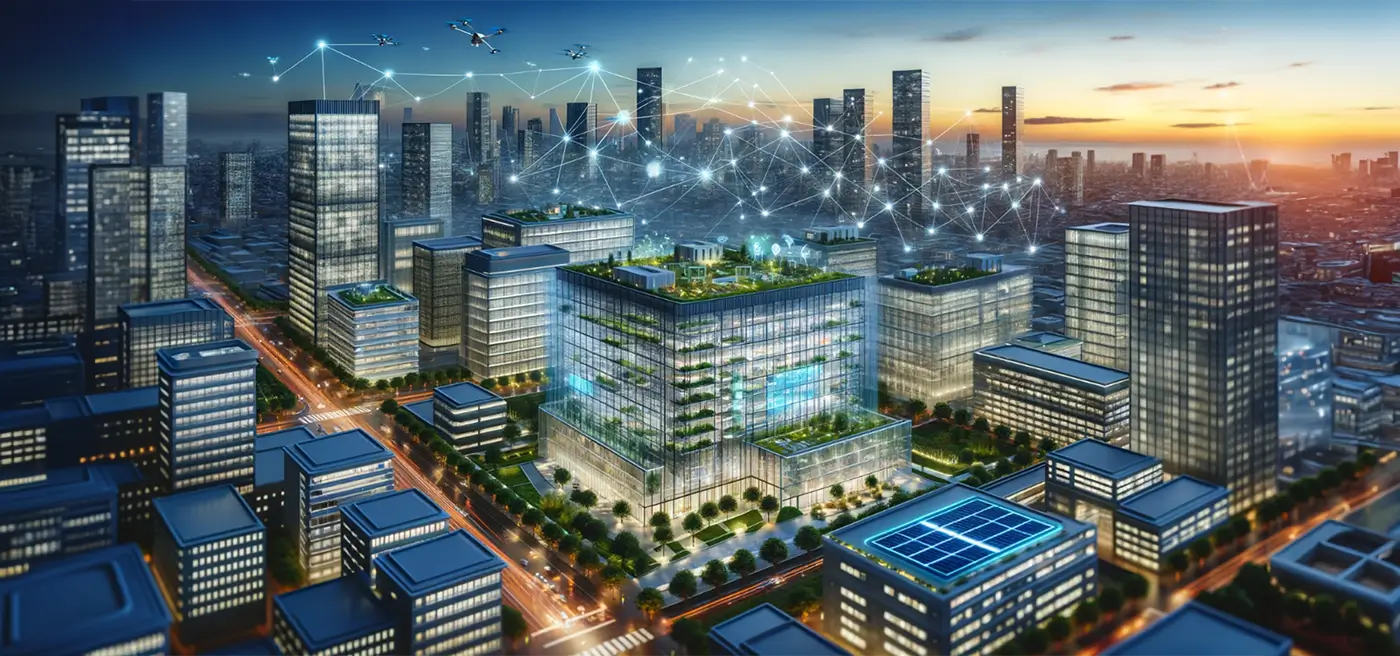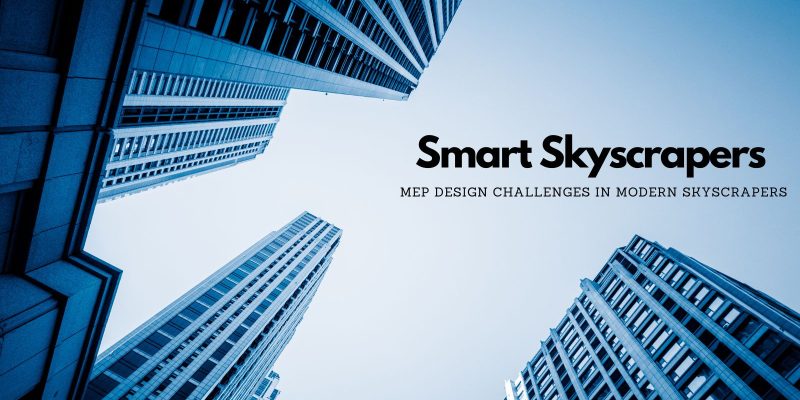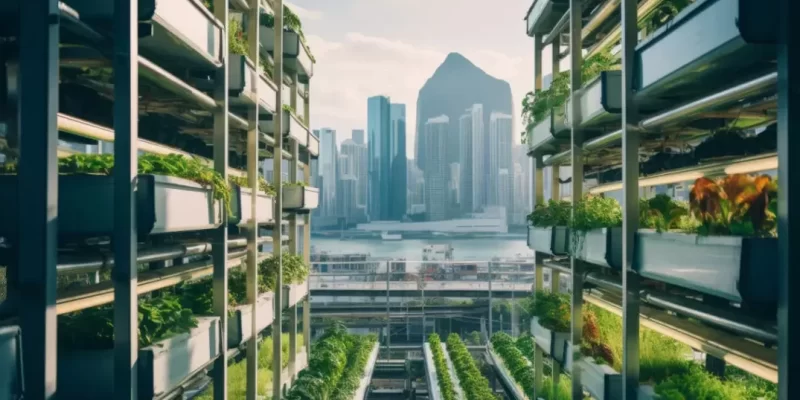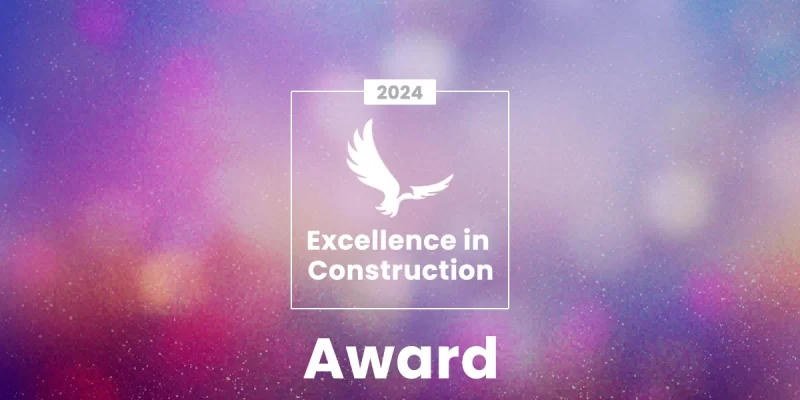ADVANCED INTEGRATION OF SMART BUILDING TECHNOLOGIES
IOT, automation, and smart design blend into modern buildings. They boost efficiency; also, they reimagine how spaces can serve us. Predictive maintenance, powered by machine learning, exemplifies this shift. By analyzing data from HVAC systems, algorithms can predict potential failures. It allows for proactive maintenance that reduces downtime and saves on costs.
Cutting-Edge Components and Their Applications
- Smart Sensors: Beyond basic functions, advanced sensors now assess environmental quality, offering insights into air quality and its impact on health and productivity. The WELL Building Standard, for instance, incorporates these sensors to ensure spaces promote occupants’ health and well-being.
- Energy Management: Buildings that adapt to energy pricing fluctuations and demand-response signals illustrate the leap towards real-. The use of dynamic glazing technology, as seen in the Edge in Amsterdam, adjusts window transparency to optimize for light and heat, contributing to significant energy reductions.
- Smart Lighting: Lighting systems that learn from occupant behaviour and adjust accordingly not only enhance comfort but also drive down energy use. Philips’ connected lighting system in The Edge uses occupancy data to provide light where and when it’s needed, maximizing energy savings.
- Security Systems: The advancement in security systems includes the adoption of biometric and IoT technologies for a layered security approach. For example, the use of facial recognition for access control in high-security buildings showcases the blend of convenience and security.
TRANSFORMATIVE IMPACT OF IOT AND AUTOMATION
The detailed analytics from IoT devices offer a close look at building operations. They allow for new optimization. Automated fault detection systems exemplify how real-time data can be leveraged to anticipate and mitigate potential issues, ensuring seamless building operations.
REAL-WORLD BENEFITS AND CHALLENGES
The tangible benefits of these technologies are evident in projects like The Edge in Amsterdam, which has achieved acclaim as one of the world’s greenest buildings. It uses smart tech for energy, security, and comfort. This shows the greatest heights possible. However, the path to gaining these benefits is hard. It includes the need for standards to ensure systems work together. And, strategies to address privacy and data security issues.
EMERGING TRENDS AND THE FUTURE OF SMART BUILDINGS
The future of smart buildings holds exciting possibilities, with emerging trends shaping the way we design, construct, and manage buildings. Here are some key trends to watch for:
Net-Positive Energy Production and Smart Grid Integration:
Smart buildings are increasingly combining renewable energy sources, such as solar panels and geothermal systems, to generate their own energy. This, coupled with smart grid technologies, allows buildings to sell excess energy back to the grid, transforming them into net-positive energy producers and redefining their role in urban energy landscapes.
Digital Twins for Enhanced Design and Management:
Digital twins, virtual replicas of physical buildings, are becoming powerful tools for scenario planning and optimization. These models enable architects, engineers, and facility managers to simulate different design options, predict performance, and optimize operations, leading to more efficient and sustainable buildings.
Blockchain for Transparent and Efficient Building Management:
Blockchain technology is gaining traction in building management, offering enhanced transparency, efficiency, and trust. From energy trading to maintenance contracts, blockchain can streamline processes, reduce costs, and improve accountability.
Advanced Data Analytics and IoT Integration:
Smart buildings are leveraging data analytics and IoT sensors to gather and analyze vast amounts of data on energy consumption, occupancy, and equipment performance. This data-driven approach enables predictive maintenance, energy optimization, and enhanced occupant comfort.
AI for Adaptive Building Automation:
AI and machine learning are transforming building automation systems, enabling buildings to learn, adapt, and optimize their operations autonomously. This can lead to significant energy savings, reduced maintenance costs, and improved occupant comfort.
Focus on Health and Wellness:
Smart buildings are prioritizing occupant health and well-being by incorporating biophilic design elements, such as natural light, greenery, and fresh air. Wellness-focused technologies, such as circadian lighting and air purification systems, are also gaining popularity, creating healthier and more comfortable indoor environments.
Resilience and Disaster Preparedness:
In response to increasing climate risks, smart buildings are incorporating resilient design features and systems to ensure continuity of operations and occupant safety during emergencies.
Personalized User Experiences:
Smart buildings are becoming more responsive to individual needs and preferences. From personalized climate control to adaptive workspace configurations, buildings are adapting to the unique requirements of occupants, enhancing satisfaction and productivity.
These emerging trends are shaping the future of smart buildings, creating a built environment that is sustainable, efficient, and human-centric. As technology continues to advance, we can expect even more innovative and transformative applications in the years to come
AS WE CONCLUDE
Smart building technologies are on the edge of a new era in the built environment. Each improvement in IoT, automation, and design makes our buildings more than spaces. They become dynamic entities that interact with people and the environment in meaningful ways. As we keep innovating and solving implementation challenges, the vision of intelligent, sustainable buildings gets closer to reality.
The journey is complex and filled with obstacles, but the chance to redefine our relationship with the spaces we live in is too important to ignore. The future of smart buildings is not only about technology. It’s about imagining a world where every building improves people’s lives and helps the planet.














